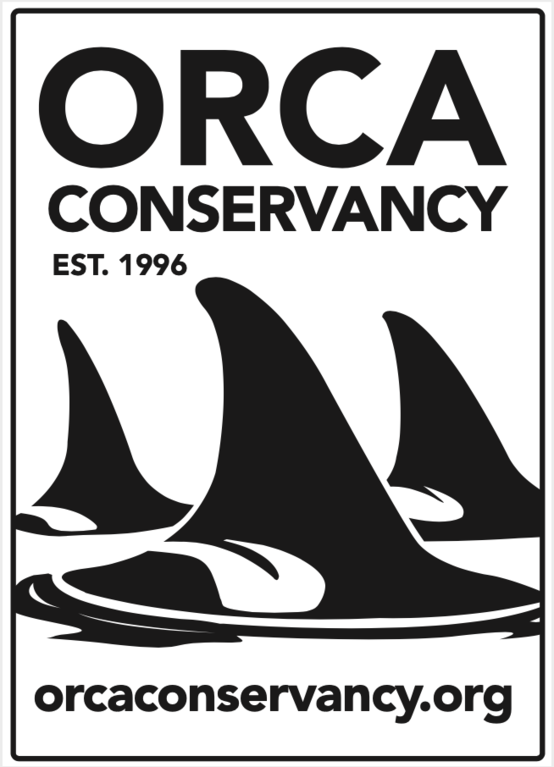Orca Conservancy's stance on the Whale Sanctuary Project creating a permanent seaside sanctuary for orcas in the PNW
Orca Conservancy attended the meeting held on Thursday, July 18, at the Great Hall at Green Lake LLC; 7220 Woodlawn Ave NE. First, it needs to be said that our decision does not change the respect and long-term friendships we have with Lori, Jeff, and the entire Whale Sanctuary Project team.
Orca Conservancy supports having a facility for rescue, rehabilitation, and release of killer whales. However, we have serious concerns over the value of a permanent holding facility, and prefer to focus our actions on efforts that will make a long lasting difference in the lives of wild whales -- specifically, the endangered Southern Resident killer whale (SRKW) and the threatened Northern Resident killer whale (NRKW) populations -- than moving a small number of captive whales to a facility that trades off increased space for more limited social lives.
As an internal background for the above, the Whale Sanctuary Project (WSP) design would have been an appropriate facility for the rehabilitation of A73 (Springer). On May 24th 2002 - an advisory panel of whale experts (including WA State, Canadian officials, and veterinary and killer whale experts ) concluded that the best course of action was to rescue and relocate, BEFORE the actual stranding took place. With support from the Orphan Orca Fund (a group or seven NGOs) and the Prescott Stranding Grant Program, NOAA announced plans to rescue, rehabilitate and return the orphaned killer whale, A73 (Springer), to its pod, Thereby, making A73 (Springer) the first wild killer whale to be captured and successfully reintroduced to her pod. (Click to view The Springer File).
The WSP budget is $15 million for construction and $2 million per year for operation of a facility for 6-8 whales. WSP plans to deny family life to a species remarkable for the central role family plays in their lives. They also plan to keep males separate from females, limiting the richness of non-kin social interactions. Frankly, the $15 million estimated for construction, we feel, would be better spent on salmon restoration projects and mitigation efforts to increase both SRKW and NRKW growth and recovery.
The WSP plan lacks capacity to protect the whales from oil and sewage spills. One potential site is likely to have stressful levels of noise a large percentage of the time (and that assumes no one goes to their site to whale watch). We have concerns about whether their facilities will be storm-proof, but they do seem to have the competence to design a storm-proof facility, assuming they have adequate funding. Earthquake resistance is something they did not address.
The WSP came across as naive regarding potential for disease transmission and escape. They did not address waste management, although since they propose using the collapsed Cypress Island fish farm site, they should be aware of the issue. Orca Conservancy was deeply involved with the success of the Our Sound Our Salmon coalition which worked tirelessly in phasing out Atlantic salmon net pens in Washington state. To place another facility within Cypress Island comes across as being counter-productive in not only protecting SRKW critical habitat but Washington waterways as well.
The Whale Sanctuary Project (WSP) admittedly anticipates a rapid growth of the aquarium industry in China. By putting whales in sanctuaries, that would mean China will use wild captures to fill their aquariums rather than transferring in captive born whales. The negative impact of wild captures far exceeds the negative impact of ongoing captivity for whales that have already acclimated to it.
On a positive note, the WSP is being completely transparent that this is not a plan to put whales in the wild. The WSP acknowledges that captive whales are likely to need ongoing medical treatment. WSP conceded that captive born whales will lack the skills to survive in the wild, they also admitted that no whale owners have agreed to work with them, so they want to pursue a "build it and they will come" strategy, meaning their investment may never be used.
Finally, there are policy decisions that would affect the value of the project. Historically, National Marine Fisheries Service (NMFS), has only allowed intervention with Southern Residents once they're on the beach. (Northern Resident, A73 (Springer) has been the only exception to date). This would mean the WSP facility would only be used for a couple months every 10-20 years. However, if NMFS allows intervention with free swimming whales, it would be used much more frequently. For that intervention to be meaningful, the overall habitat needs to be improved enough for the population to grow.
Therefore, based on the information most recently being discussed, Orca Conservancy does not support the current WSP plan.
